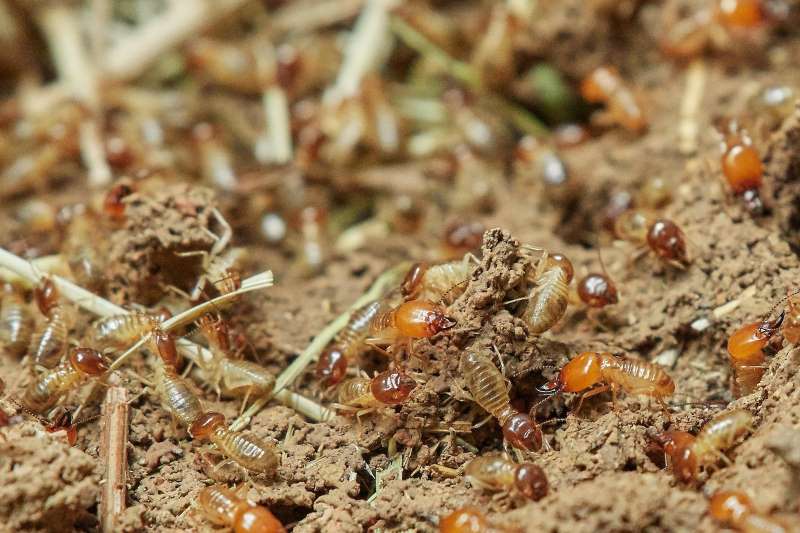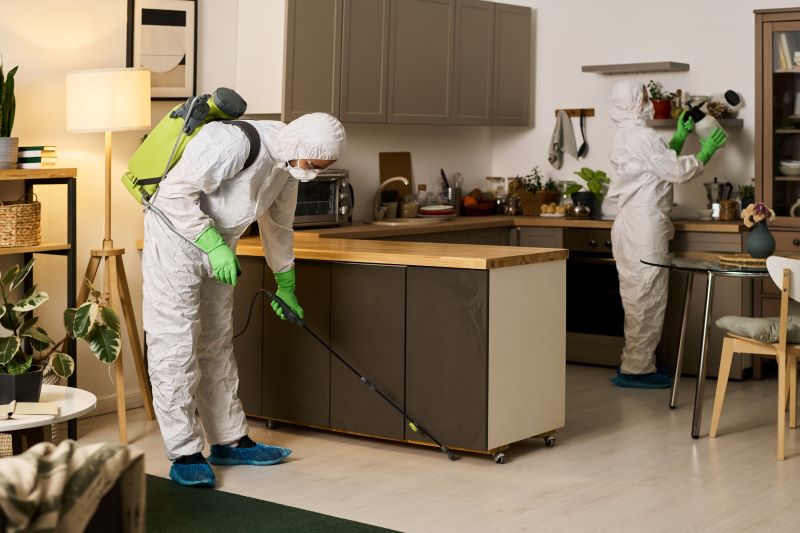Want to protect your home from one of the most devastating pests in Australia?
Termites are sneaky little destroyers that can absolutely wreck your property before you even know they’re there. Here’s the scary part: One in three Australian homes will experience a termite infestation at some point.
But there’s good news…
By understanding the warning signs and taking action early, you can save yourself thousands in repair costs and protect your biggest investment.
What’s inside this guide:
- Why Termites Are Australia’s Silent Home Destroyers
- The Warning Signs That Scream “Termite Problem!”
- How to Spot the Damage Before It’s Too Late
- What to Do When You Find Evidence
Why Termites Are Australia’s Silent Home Destroyers
Termites are absolutely brutal when it comes to property damage.
These tiny insects cause more destruction than you’d ever imagine. Get this: Termites cause more damage to homes in Australia than fire, floods, storms and tempest, combined. That’s a pretty wild statistic when you think about it.
And here’s the kicker…
Termites infest and damage approximately one out of every five houses in Australia, affecting anywhere between 130,000 and 180,000 Australian homes each year. The financial impact is staggering too – Australian homeowners face an annual cost of approximately $1.5 billion due to termite damage.
What makes termites so dangerous?
They eat your house from the inside out. While you’re going about your daily life, these little guys are munching through your home’s structural timber. They can cause irreparable damage within just 12 months of attacking a property.
The worst part? Most home insurance policies won’t cover termite damage. That means every dollar of repair costs comes straight out of your pocket.
This is exactly why regular termite inspections are so important. If you’re in Queensland, professional termite inspection services in Brisbane can help detect these problems early before they become expensive disasters.
The Warning Signs That Scream “Termite Problem!”
Spotting termite activity early is your best defense against massive repair bills. Here are the key warning signs every homeowner should watch for:
Mud Tubes on Your Walls
Ever seen little brown tubes running up your exterior walls? Those are termite highways.
Termites build these pencil-width mud tubes to travel between their colony and their food source (your house). They need these tubes to stay moist while they move around. You’ll typically find them:
- Along foundation walls
- In crawl spaces
- On exterior walls
- Around pipes and utility lines
If you spot these tubes, you’ve got active termites. Don’t ignore them.
Hollow-Sounding Timber
Tap on your wooden structures around the house. Does any of it sound hollow or papery? That’s a dead giveaway.
Termites eat wood from the inside out, leaving just a thin shell behind. When you knock on infested timber, it sounds completely different from healthy wood. This is especially common in:
- Door frames
- Window frames
- Skirting boards
- Wooden beams
Discarded Wings Near Windows and Doors
Found little piles of wings near your windows or doors? That’s termite swarmers.
When termites are ready to start new colonies, they grow wings and swarm. After they find a good spot, they shed their wings and get to work. These wing piles are usually found:
- On windowsills
- Near door frames
- Around light sources
- In spider webs
The wings are all the same size and twice as long as the termite’s body. If you see these, there’s likely a colony nearby.
Tight-Fitting Doors and Windows
Windows and doors that suddenly become hard to open or close can signal termite damage.
As termites eat through wooden frames, they can cause warping and structural changes. The moisture from their mud tubes can also cause wood to swell. This creates that annoying sticky feeling when you try to open doors and windows.
Damaged or Bubbling Paint
Paint that’s bubbling, cracking, or peeling off timber surfaces is another red flag.
Termites create moisture as they work, and this can cause paint to bubble and peel. You might also notice:
- Discolored patches on walls
- Small pin holes in painted surfaces
- Paint that looks like it’s been damaged by water
How to Spot the Damage Before It’s Too Late
The earlier you catch termite activity, the less damage they’ll cause. Here’s how to stay ahead of the game:
Regular Visual Inspections
Walk around your property every few months and look for the warning signs mentioned above. Pay special attention to:
- Areas where wood meets soil
- Damp or humid spots
- Places with poor ventilation
- Around leaking pipes or taps
Check for Termite Droppings
Termite droppings (called frass) look like small wood-colored pellets or sawdust. You’ll often find them:
- Near infested timber
- At the entrance to termite galleries
- In small cone-shaped piles
Don’t confuse this with regular sawdust – termite frass has a more granular appearance and often contains pieces of wood and termite body parts.
Listen for Unusual Sounds
Soldier termites bang their heads against tunnel walls when they sense danger. If you put your ear to wooden structures, you might hear:
- Soft clicking sounds
- Rustling noises
- Tapping sounds
These sounds are usually most noticeable in quiet environments during the night.
Look for Structural Changes
Termites can compromise the structural integrity of your home. Watch for:
- Sagging floors or ceilings
- Buckling or warped flooring
- Cracks in walls or foundations
- Doors and windows that don’t close properly
What to Do When You Find Evidence
Found signs of termite activity? Don’t panic, but do act quickly.
Here’s your action plan:
Don’t disturb the area. Termites are sensitive to vibrations and will often move to other parts of your home if they detect activity.
Document everything. Take photos of any damage or signs you’ve found. This will help pest control professionals assess the situation.
Contact professionals immediately. Termite treatment isn’t a DIY job. You need experienced professionals who know how to locate colonies and eliminate them completely.
Avoid home remedies. Spraying surface areas with general insecticides will only scatter the termites to other parts of your home.
Get a comprehensive inspection. A professional inspection will identify the extent of the problem and create a treatment plan.
Remember, the cost of professional treatment is always less than the cost of major structural repairs. On average, termite damage repairs can cost anywhere from $10,000 to $100,000 depending on the severity.
Staying One Step Ahead
The best defense against termites is prevention and early detection.
Schedule annual professional inspections, especially if you live in high-risk areas. Keep an eye out for the warning signs we’ve covered, and don’t ignore small problems – they have a way of becoming big ones very quickly.
Termites might be silent destroyers, but they’re not invisible. With the right knowledge and regular vigilance, you can protect your home from these costly pests.
The key is staying alert and acting fast when you spot the signs. Your home is probably your biggest investment – don’t let termites eat it away from under you.
Final Thoughts
Termites are a serious threat to Australian homes, but they’re not unstoppable. By understanding the warning signs and taking action early, you can save yourself thousands in repair costs and protect your property.
Remember, the signs are often subtle at first, but they’re there if you know what to look for. Regular inspections and quick action are your best weapons against these silent destroyers.
Don’t wait until it’s too late – start checking for these signs today.


